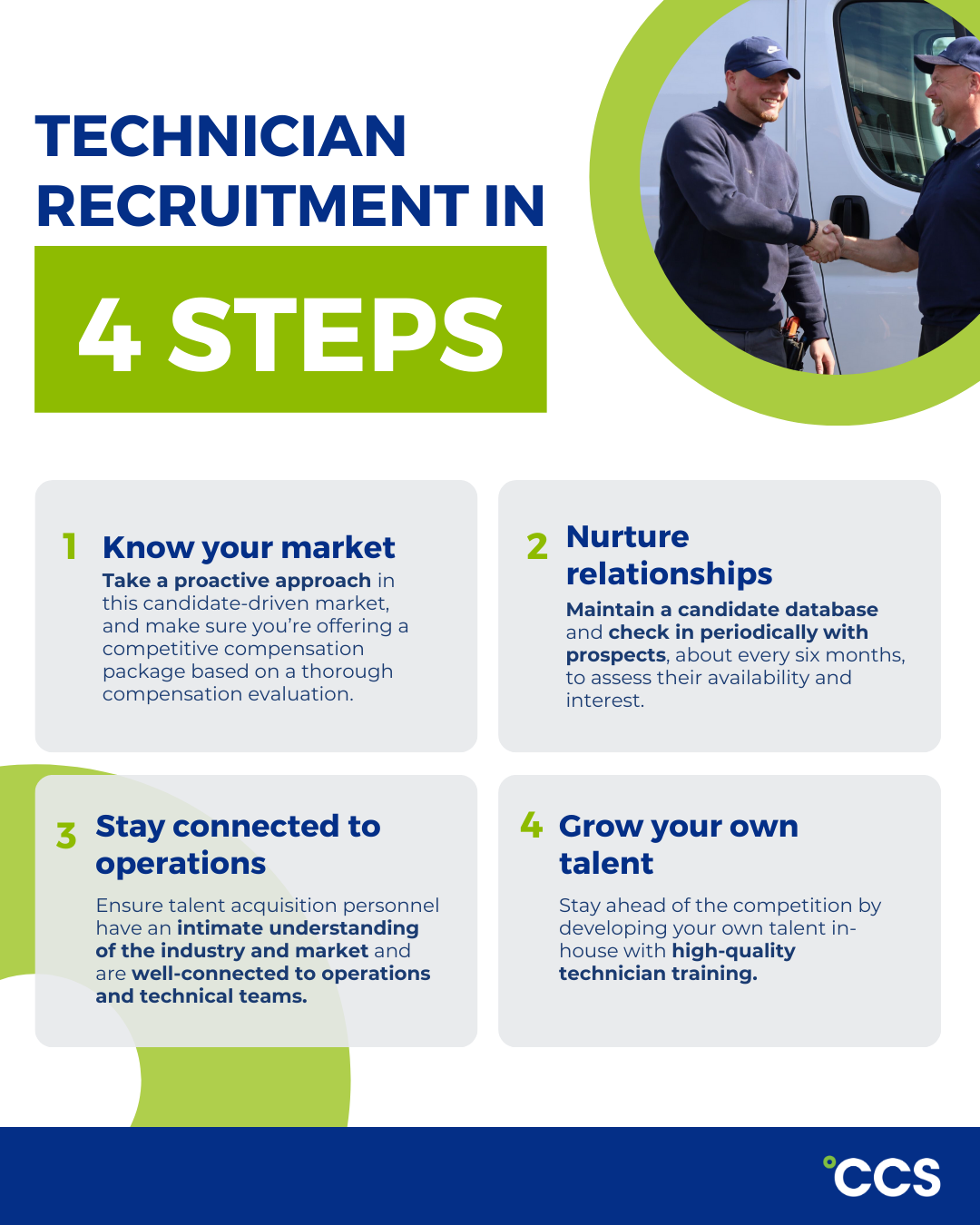
What are the best practices for acquiring tech services

In today's rapidly evolving technological landscape, acquiring the right tech services is essential for organizations aiming to stay competitive. **Managing information services** effectively involves strategic planning and consideration of various factors that can impact an organization's long-term success. From **balancing immediate operational needs** to adapting to future growth, companies must navigate a complex environment when making choices about technical services acquisition.
This article explores the best practices for acquiring tech services with a structured approach, emphasizing the importance of comprehensive planning, the role of specialized vendors, and the benefits of leveraging cloud computing. By understanding these practices, organizations can better position themselves to optimize their **managing information services** and align their technology investments with their overall business strategy.
- Importance of Long-term Planning in Tech Services Acquisition
- Balancing Strategic Priorities with Immediate Needs
- External Sourcing vs. Internal Development: What to Consider
- The Role of Specialized Vendors in Tech Services
- Understanding Outsourcing and Offshoring Strategies
- Benefits and Challenges of Cloud Computing
- Exploring Different Cloud Service Models (IaaS, PaaS, SaaS)
- Public Clouds: Pros and Cons for Businesses
- Customization Options: Leasing Proprietary Software vs. Open-source Solutions
- The Importance of Technical Support for Open-source Applications
- Conclusion: Best Practices for Successful Tech Services Acquisition
Importance of Long-term Planning in Tech Services Acquisition
Effective **managing information services** hinges on a well-thought-out long-term planning strategy. This approach enables organizations to anticipate technological trends and align their tech services with future business goals. A long-term strategy ensures that the selected technology solutions not only meet current demands but also remain viable as the organization scales. Without a proper plan, firms may find themselves reactive rather than proactive, leading to costly decisions and potential service disruptions.
Positioning Tech Services for the Future
Companies should conduct regular assessments of their tech needs and technological advancements in the industry. By investing time and resources in research, organizations can develop a roadmap that identifies critical initiatives and technologies necessary for future growth. This proactive approach mitigates risks associated with hasty acquisitions and ensures that **managing information services** aligns with business objectives.
Balancing Strategic Priorities with Immediate Needs
When acquiring tech services, it's vital to strike a balance between strategic priorities and immediate operational needs. Companies often face pressing concerns such as regulatory compliance, customer integration, and data management that require immediate attention. However, while addressing these urgent needs, it is equally critical to consider how these decisions impact long-term objectives.
Creating a Cohesive Strategy
A cohesive strategy involves integrating immediate needs into the broader context of organizational goals. This requires clear communication among stakeholders about priorities and potential trade-offs. For instance, investing in quick solutions might address short-term issues but could lead to integrations that complicate future upgrades or scalability. **Managing information services** effectively means ensuring that immediate tech solutions complement long-term strategies.
External Sourcing vs. Internal Development: What to Consider
When evaluating how to acquire tech services, organizations must weigh the benefits of **external sourcing** against **internal development**. **External sourcing** involves hiring specialized vendors or consultants to provide solutions that meet specific business needs, while internal development focuses on building custom solutions with in-house capabilities.
Pros and Cons of External Sourcing
- Access to Expertise: External vendors often bring a wealth of experience and best practices that can accelerate project timelines.
- Cost Management: External firms can provide cost-effective solutions, especially when specific expertise is not available in-house.
- Focus on Core Competencies: By outsourcing certain tech functions, organizations can concentrate resources on their primary business activities.
Pros and Cons of Internal Development
- Customization: Building a solution in-house grants complete control over functionality and compliance to specific organizational needs.
- Skill Development: Internal projects can enhance the skill sets of team members, fostering a culture of innovation.
- Alignment with Business Strategy: Internal development allows for a better alignment with strategic priorities, as the team possesses intimate knowledge of organizational processes.
The Role of Specialized Vendors in Tech Services
Specialized vendors play a crucial role in the tech services landscape. As organizations seek to enhance their **managing information services**, these vendors offer targeted solutions that address specific challenges. **Specialized vendors** often provide advanced capabilities that internal teams may not possess, supporting companies in their quest for innovative technologies.
Criteria for Selecting Specialized Vendors
Choosing the right vendor is pivotal. Companies should evaluate potential vendors based on their track record, industry expertise, and ability to provide tailored services. Additionally, considering how well a vendor can integrate with existing systems is fundamental for seamless service delivery. Establishing criteria such as responsiveness, after-sales support, and compliance with security standards can further aid in selecting an appropriate partner.
Understanding Outsourcing and Offshoring Strategies
**Outsourcing and offshoring strategies** are popular approaches to tech services acquisition. Outsourcing involves contracting tasks to external firms, while offshoring relocates these functions abroad to benefit from cost efficiencies. Each has its advantages, such as accessing a broader talent pool and reducing operational overheads.
Evaluating Outsourcing Benefits
Outsourcing allows organizations to achieve scale quickly without the overhead of hiring full-time employees. Moreover, outsourcing can help to **manage information services** more effectively by bringing in specialist knowledge, resulting in superior service quality. However, organizations must conduct due diligence to mitigate risks related to data security and the reliability of the service provider.
Offshoring Considerations
The allure of **offshoring** lies primarily in cost savings; however, organizations must also consider challenges such as time zone differences, cultural barriers, and communication issues. Finding a reputable offshore partner who shares similar values and practices is essential to ensure a smooth collaboration. Establishing clear protocols on communication and service level agreements can help to bridge gaps and ensure operational alignment.
Benefits and Challenges of Cloud Computing
Cloud computing has transformed the landscape of **managing information services** by providing scalable and cost-effective solutions. Organizations can access a variety of services on a subscription basis, enabling flexibility and rapid deployment of resources. However, with its many benefits come certain challenges that organizations must navigate.
Advantages of Cloud Computing
- Scalability: Organizations can quickly adjust their resources up or down according to demand, making it easier to manage fluctuating workloads.
- Cost Savings: Cloud solutions allow businesses to reduce capital expenses associated with physical infrastructure and maintenance.
- Accessibility: Cloud services can often be accessed from any device with internet connectivity, facilitating remote work and collaboration.
Challenges Associated with Cloud Computing
- Data Security: Organizations must ensure that sensitive data is secure in the cloud, requiring robust security measures.
- Vendor Lock-in: Companies may find it challenging to shift to another vendor due to dependencies created on specific cloud configurations.
- Compliance Issues: Maintaining regulatory compliance can be more complicated in cloud environments, requiring thorough understanding and management of data residency.
Exploring Different Cloud Service Models (IaaS, PaaS, SaaS)
Understanding different cloud service models is crucial for effective **managing information services**. The three primary models—**Infrastructure as a Service (IaaS)**, **Platform as a Service (PaaS)**, and **Software as a Service (SaaS)**—each have unique features and benefits.
Infrastructure as a Service (IaaS)
IaaS provides organizations with fundamental computing resources over the internet. This model allows businesses to rent IT infrastructure, including servers and storage, rather than investing in physical equipment. The flexibility of IaaS means that businesses can scale resources based on current needs without the burden of maintenance.
Platform as a Service (PaaS)
PaaS offers a platform allowing developers to build, deploy, and manage applications without worrying about the underlying infrastructure. This model supports rapid development cycles and agile methodologies, making it easier for businesses to innovate. PaaS simplifies workflows and enhances collaboration among development teams.
Software as a Service (SaaS)
SaaS delivers software applications over the internet on a subscription basis. It removes the need for installation and maintenance, providing ready-to-use solutions accessible from any device. SaaS is particularly advantageous for organizations looking for cost-effective applications that require minimal IT overhead.
Public Clouds: Pros and Cons for Businesses
Public cloud services have gained prominence due to their scalability and affordability. However, organizations must carefully consider the pros and cons associated with using public clouds for their tech needs.
Pros of Public Clouds
- Cost-Effectiveness: Public clouds offer a pay-as-you-go model, which can significantly lower capital expenditure.
- Scalability: Businesses can easily scale resources based on demand, allowing for agile adjustments to service capacity.
- Maintenance-Free: Providers handle all maintenance and updates, freeing internal teams to focus on strategic initiatives.
Cons of Public Clouds
- Lack of Control: Organizations have less control over data and applications hosted publicly, which can raise security concerns.
- Data Residency Issues: Compliance with local laws regarding data storage can be complicated due to the geographically dispersed nature of public clouds.
- Dependency on Provider: Organizations become reliant on the availability and reliability of the public cloud provider.
Customization Options: Leasing Proprietary Software vs. Open-source Solutions
When acquiring tech services, organizations often face the decision of whether to lease proprietary software or choose **open-source solutions**. Both options offer unique benefits and challenges that can impact overall effectiveness in **managing information services**.
Leasing Proprietary Software
Leasing proprietary software typically provides organizations with reliable support and regular updates. Vendors usually offer robust customer service and dedicated resources to address operational issues. However, licensing fees can be high, and companies may face limitations on customization, depending on the vendor's policies.
Open-source Solutions
Open-source software is often a more flexible and cost-effective choice; however, it requires a higher degree of technical expertise to manage and customize. While there are no licensing fees, organizations may incur costs related to implementation and maintenance. The popularity of open-source applications highlights their capability, but users must ensure access to reliable vendor support for problem resolution and updates.
The Importance of Technical Support for Open-source Applications
While **open-source applications** can be beneficial, they come with the inherent need for reliable technical support. Given that these solutions often lack the structured support that proprietary software offers, organizations must establish a proactive strategy for **managing information services** effectively.
Strategies to Optimize Technical Support
- Community Engagement: Engage with the open-source community for support and advice, which can provide insight and solutions to common challenges.
- Dedicated In-house Expertise: Invest in training internal teams to navigate and deploy open-source applications efficiently.
- Third-party Support Services: Consider purchasing dedicated support from vendors that specialize in open-source applications to ensure timely assistance.
Conclusion: Best Practices for Successful Tech Services Acquisition
In conclusion, the acquisition of tech services is a multifaceted endeavor that requires careful consideration and strategic planning. Organizations must focus on **managing information services** by balancing immediate needs with long-term objectives. Establishing a clear strategy, evaluating the role of external vendors, leveraging cloud computing, and making informed decisions between proprietary and open-source solutions are essential components of a cohesive acquisition plan.
By adhering to the best practices outlined in this article, companies can navigate the complexities of tech services acquisition and ensure their investments effectively support organizational growth and innovation. This approach will help organizations optimize their tech services in a way that leads to the successful management of information and an overall competitive advantage in the market.
Did you find this article helpful? What are the best practices for acquiring tech services See more here General.
Leave a Reply





Related posts